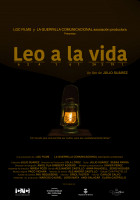Leo a la vida Filming Locations
Leo a la vida Filming Locations
Spain, a country on Europe’s Iberian Peninsula, includes 17 autonomous regions with diverse geography and cultures. Capital city Madrid is home to the Royal Palace and Prado museum, housing works by European masters. Segovia has a medieval castle (the Alcázar) and an intact Roman aqueduct. Catalonia’s capital, Barcelona, is defined by Antoni Gaudí’s whimsical modernist landmarks like the Sagrada Família church.
Cuba, officially the Republic of Cuba, is an island country, comprising the island of Cuba, Isla de la Juventud, archipelagos, 4,195 islands and cays surrounding the main island. Cuba is located where the northern Caribbean Sea, Gulf of Mexico, and Atlantic Ocean meet.
Nicaragua, set between the Pacific Ocean and the Caribbean Sea, is a Central American nation known for its dramatic terrain of lakes, volcanoes and beaches. Vast Lake Managua and the iconic stratovolcano Momotombo sit north of the capital Managua. To its south is Granada, noted for its Spanish colonial architecture and an archipelago of navigable islets rich in tropical bird life.
Venezuela is a country on the northern coast of South America with diverse natural attractions. Along its Caribbean coast are tropical resort islands including Isla de Margarita and the Los Roques archipelago. To the northwest are the Andes Mountains and the colonial town of Mérida, a base for visiting Sierra Nevada National Park. Caracas, the capital, is to the north.
Haiti is a Caribbean country that shares the island of Hispaniola with the Dominican Republic to its east. Though it’s still recovering from a 2010 earthquake, many of Haiti's landmarks dating to the early 19th century remain intact. These include Citadelle la Ferrière, a mountaintop fortress, and the nearby ruins of Sans-Souci Palace, the baroque former royal home of King Henry I.
Leo a la vida (2017)
A group of people are attending the screening of an interview with Leonela Relys, a humble Cuban teacher who created a simple literacy method, Yes, I can, with this method, more than 20 million people have been literate in a bit more than one decade. A didactic and innovative method awarded by UNESCO and which has represented a new hope in the struggle for a literate and cultured world. Leonela words, along with the participation of other characters, are the common thread of this document that goes deep into the problem of illiteracy. Testimony to testimony we are discovering the germ of all the inequalities, discriminations and injustices that hit the world. Because illiteracy is not only that you cannot read or write, it is not only a problema of the Third World: illiteracy, in any of its variants versions, goes with each person, each community, and if we are unable to identify and eradicate it we will contribute to the perpetuation of poverty and exclusion of an important part of the world society. Leo to life is more than a documentary, it is a guide that questions us and invites us to analyze how free we are of illiteracy, especially political illiteracy. In the journey of life, it is like holding a humble oil lamp in the middle of the the deepest darkness.
